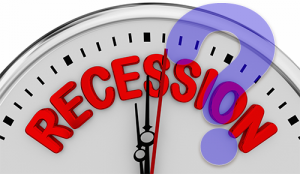
By Richard Morey
January 3, 2024
 First, a Few Points to Consider
First, a Few Points to Consider
Just the facts: The stock market (S&P 500) went down 18% in 2022 and then went up 26% in 2023. In real terms, due to the nature of loss recovery requiring higher gains, this put it right back where it was in January of 2022. There has been virtually no actual gain over the last two years.
- Also in January of 2022, the stock market became the most over-priced market in history. Since then, much higher interest rates have made business much more challenging – and corporate earnings have fallen throughout. We’ve also seen a breakdown in major areas of the economy/markets such as commercial real estate and regional banking.
- In other words, stock-buyers are paying ultra-premium prices for companies earning less money & paying much more on their debt – in an economy showing signs of growing consumer retrenchment.
Stock Market Crystal Ball
If we had one (a crystal ball), there’s a good chance it would show the stock market following 2022 – at least in the beginning of the downturn. You can already see this in the fact the semiconductor index dropped nearly 7% at the start of this New Year. Semiconductors led the way down in 2022 (as they almost always do), and they led the way up last year. Now – as expected – they’ve turned back down to start the year.
This nascent stock market slide is likely to continue – on and off – through March or until the financial system has a liquidity event. A liquidity event is when the system freezes up and can no longer set prices and/or facilitate the transfer of assets. I’m a little surprised we haven’t yet seen signs of stress in the US from financial problems on full display right now in Chinese and European banks.
Based on current macroeconomic data, here’s what I am concerned may happen in 2024:
- The stock market declines roughly 20% from January through March.
- At some point the financial system has a liquidity event – at which time stocks plummet beyond 20%.
- The Fed will then step in and flood the whole world with liquidity which will end the financial crisis portion of the program.
- March or April, however, arrives and the newspaper headlines announce, “US in Recession.” By mid-summer it’s clear this recession isn’t the mild version investors have been promised. Instead, the economy falls further and faster than nearly anyone saw coming.
- March or April, however, arrives and the newspaper headlines announce, “US in Recession.” By mid-summer it’s clear this recession isn’t the mild version investors have been promised. Instead, the economy falls further and faster than nearly anyone saw coming.
- The stock market proceeds to lose another 50% from then until some quarter in the future. Combined with the 20% lost pre-recession, this would give us a slight overshoot to the downside – based on valuations – with a 70% loss for stocks.
 Bond Market Predictions
Bond Market Predictions
These predictions are going to be far less precise due to competing forces related to inflation. You can’t divorce bond prices from inflation and subsequent interest rate increases. When inflation rises modestly, bonds get hurt, and when it rises quite a bit – like in 2022 – they get hit hard. They then bounced back last year – as inflation fell – with gains of 4-5% for some bonds funds and as much as 10% for others.
So our prediction for bonds is based primarily on inflation expectations. Right now they’ve gone way done, and as explained in the economic report inflation is likely to continue to fall for as long as China continues to contract. Most objective measures of inflation have been falling for months, and a cooling economy should also dampen inflation pressure.
This is a convincing argument, but there is another possibility. Unfortunately, war in the Middle East can’t be ruled out, and this could quickly and easily lead to a huge spike in oil prices, shortages of all kinds of goods, and therefore another spike in inflation.
This tells us how to proceed as bond investors. First, take advantage of today’s higher yields and what looks to be falling rates and inflation in 2024. The more adventuresome you are, the longer you go on the duration. No matter what, you stay on the high side of the credit scale. Second, own enough managed futures to fully offset any price drop in bonds if inflation should kick up again. That is a great recipe to profit and protect with bonds this year.
In terms of timing, even more aggressive bond investors might want to stay short and safe (i.e. PIMCO Income & Mortgage Opportunities) until we get even more confirmation that the economy will weaken and inflation will indeed not turn back up.
At the end of the year, the big bond winners should be those who own enough bonds rated highly enough so that any “rush to safety” will take their prices straight up. Whether it goes up a great deal or modestly (and the risk) will depend on the length of the bonds owned, i.e. the duration, but all the “right” bonds will rise solidly should serious risk hit markets this year.
